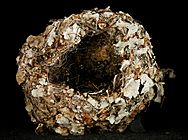Blue-gray gnatcatcher facts for kids
Quick facts for kids Blue-gray gnatcatcher |
|
|---|---|
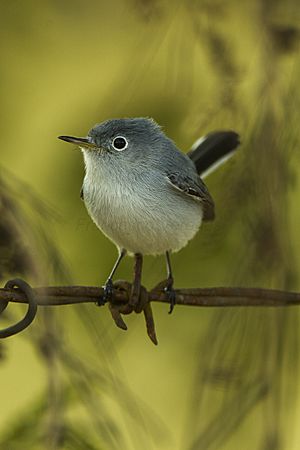 |
|
| Conservation status | |
| Scientific classification | |
| Genus: |
Polioptila
|
| Species: |
caerulea
|
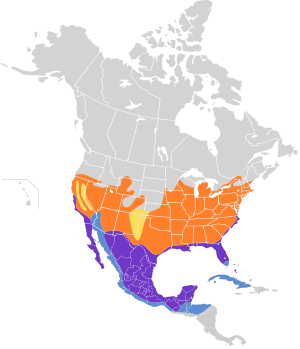 |
|
| Synonyms | |
|
Motacilla caerulea Linnaeus, 1766 |
|
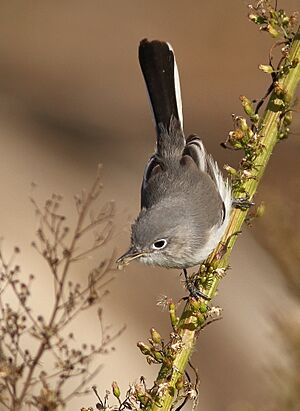
The blue-gray gnatcatcher (Polioptila caerulea) is a tiny songbird. It is about 10–13 cm (3.9–5.1 in) long. That's about the size of your hand! It weighs only 5–7 g (0.18–0.25 oz), which is lighter than a coin.
Adult male gnatcatchers have blue-gray feathers on their backs. Their bellies are white. They have a thin, dark beak and a long black tail with white edges. Females are a bit less blue. Young gnatcatchers look greenish-gray. Both males and females have a white ring around their eyes.
These birds live in open deciduous woods and bushy areas. You can find them breeding in southern Ontario, the eastern and southwestern United States, and Mexico. They are the only gnatcatcher species that breeds in Eastern North America.
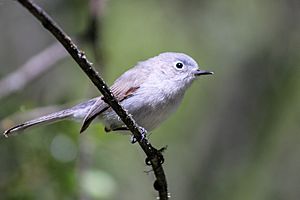
Contents
Where Do Blue-Gray Gnatcatchers Live?
Blue-gray gnatcatchers are found across a wide area. They breed in parts of Canada, the United States, and Mexico.
When winter comes, these birds migrate south. They fly to warmer places like the southern United States and Mexico. They also travel to northern Central America, including Belize, Guatemala, and Honduras. Some even go to islands like Cuba, Bahamas, the Turks and Caicos Islands, and the Cayman Islands.
What Do Blue-Gray Gnatcatchers Eat?
These active birds mostly eat insects. They search for food in trees and bushes. Their diet includes insects, insect eggs, and spiders.
They have a few clever ways to catch their food. Sometimes, they hover over leaves to snatch prey. This is called gleaning. Other times, they fly to catch insects right out of the air. This is known as hawking. You might often see them holding their tail upright. They do this when defending their space or looking for food.
What Sounds Do They Make?
Blue-gray gnatcatchers have distinct calls and songs. You can often hear them singing where they breed. They usually sing away from their nest. You might hear their calls at other times of the year too.
Their calls sound like "zkreee, zkreee, zkreee". Their songs are more complex, like "szpree zpree spreeeeey spree spre sprzrreeeee".
How Do They Raise Their Young?
Both parent gnatcatchers work together to build a nest. Their nest is shaped like a cone. They usually place it on a flat tree branch.
They both help feed their baby birds. The eggs hatch after about 13 days. A pair of gnatcatchers can raise two groups of babies in one season.
Images for kids
-
Catching an insect in Prospect Park, Brooklyn
See also
 In Spanish: Perlita grisilla para niños
In Spanish: Perlita grisilla para niños



